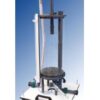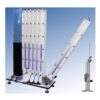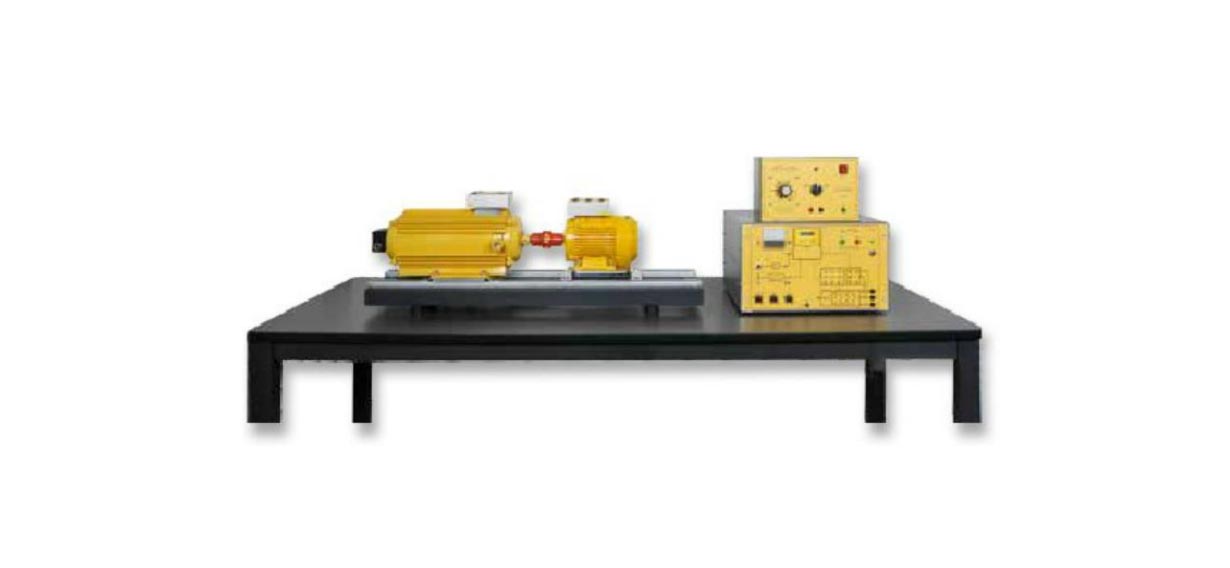There are several ways to control the speed of an induction motor and the best way would be to have a variable frequency AC drive.
The speed will be a little slower than the applied frequency but fairly close and to obtain an exact speed a feedback loop is provided with the bench to measure the rotating frequency and to adjust the variable frequency AC drive maintaining that speed as the motor speed will decrease a bit due to an electromagnetic brake acting as a load. The speed control can be achieved also through a manual control of a potentiometer with or without acceleration and deceleration ramps.
The variable frequency AC drive can be programmed from keyboard with on screen guide.
The De Lorenzo’s electric machines bench has been designed to satisfy the following basic requirements:
• The number of groups of students who must work simultaneously
• The available space of the working area
• The plan activities
• The economic advantage
The characteristic key of this bench is its total modularity which means:
• to couple the induction motor with the electromagnetic brake
• to be able to buy the bare essentials
• to configure complete solutions without creating duplication of equipment
The didactic advantage is to be able to investigate the behavior of each module making part of this bench that assumes the following configuration:
• autonomous basic bench able to perform a complete course of speed control on AC induction electric machines
• universal base, to secure the machines which can be mounted directly on the bench in front of the variable frequency AC drive
• tools and various accessories to be able to make any test on this bench
All machines are built for continuous operation and withstand an overload of about 20÷30% even for long duration.
Moreover, the induction motor and the electromagnetic brake are built with great care and they have such low losses that could be classified as real text machines.
This bench is supplied with an exhaustive instruction manual that explains all of the tests that can be performed on it. Thus, our manual can be considered a theoretical and practical “textbook”.
EXPERIMENTS
The experiments that can be performed are:
• Motor parameter setting / Autotunig
• Open loop speed regulation
• Jog speed
• Multistep control
• Motor power curve
• Motor torque-speed curve
• Closed loop speed regulation
BENCH FOR THE STUDY OF SPEED CONTROL OF AC MOTORS
The DL MAC-CCA is a multipurpose bench for the speed control of three-phase asynchronous motors of EUROLAB (0.3 kW) and UNILAB (1.1 kW) electric machines.
The asynchronous motor represents the most important and simple case in the area of polyphase machines and it is the most widespread for industrial applications as food, chemical, metallurgical industries, paper factories or water treatment and extractive systems.
















